We often look at ponies as adorable animals for children. Yet, they can still appear mysterious, elegant, and strong, especially in black.
If you’re both an equine enthusiast and lover of black animals, you know how tempting it could be to own a black pony.
Look no further. Below, we have listed the fifteen black pony breeds you can put down on your must-own list.
Table of Contents
1. Dartmoor Pony
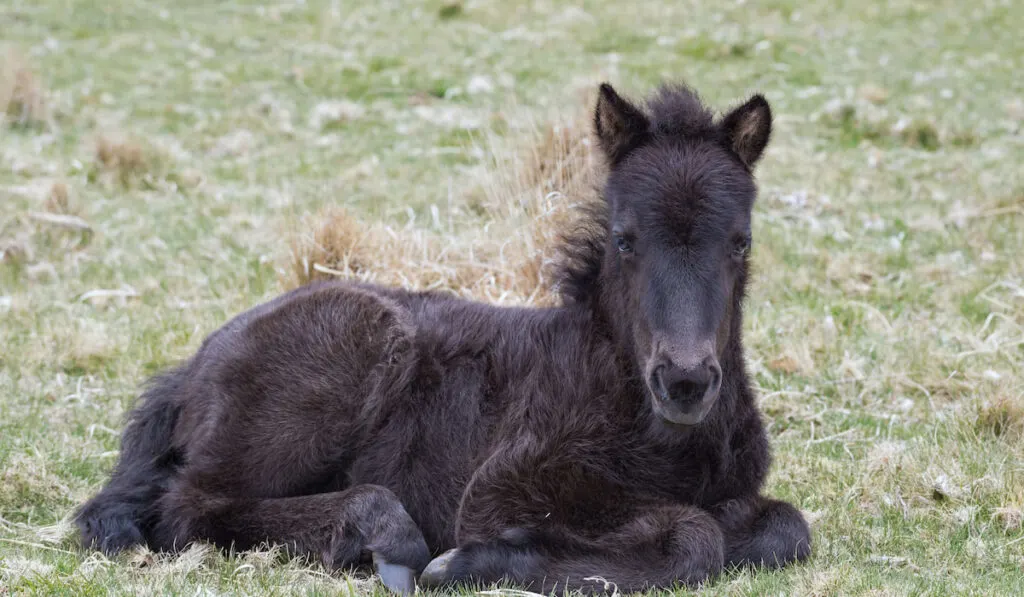
Dartmoor ponies are native to Devon County in Southwest England. But they are also available in other countries, including Europe, Australia, New Zealand, and the United States.
These ponies possess stocky bodies, large eyes, medium-sized heads, and muscular legs.
They stand 11.2 to 12.5 hands high and weigh 400 to 700 pounds.
You can find Dartmoor ponies in black, brown, bay, roan, gray, and chestnut. The Dartmoor Pony Society doesn’t consider anything other than these colors purebred.
For instance, some people have encountered skewbald and piebald ponies around their native place. These non-standard ponies are called Dartmoor Hill ponies.
Dartmoor ponies live between 25 to 30 years. However, in some cases, they can survive up to 40 years.
Today, there are more than 2,000 to 3,000 Dartmoor ponies globally.
2. Dales Pony
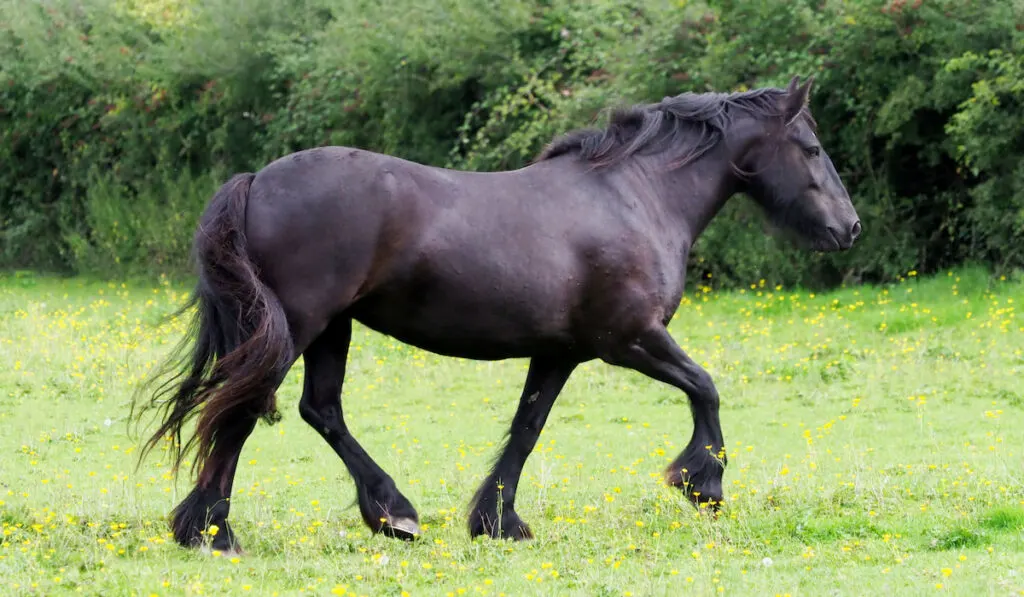
Dales ponies hail from the moors and mountainous regions in northern England.
In the old days, Dales were famous working animals used by farmers, miners, and even British armies.
These ponies generally come in black. However, rare occasions may bless you with brown, bay, gray, or roan Dales ponies.
With their sturdy frame, muscular legs, and toned necks, these ponies are perfect for trail riding, dressage, hunting, and driving. In fact, they can carry heavy loads of up to 220 pounds.
Aside from their physical prowess, Dales ponies are also intelligent, calm, and easy to handle.
3. Australian Pony
As their name suggests, Australian ponies are indigenous to Australia.
They descend from a few other breeds, such as Timor ponies, Shetland ponies, Hackney ponies, Connemara ponies, Thoroughbred horses, and the Arabians.
Australian ponies stand 11 to 14 hands high and weigh 600 pounds.
These ponies are available in many colors, including black, brown, white, gray, pied, roan, chestnut, and others.
Physically, they possess well-built heads, large dark eyes, erect ears, strong back, and athletic legs.
Since they are docile and easy to handle, you can safely let your children around them.
These ponies are also perfect for dressage, show jumping, driving, and pleasure riding.
4. Welsh Pony
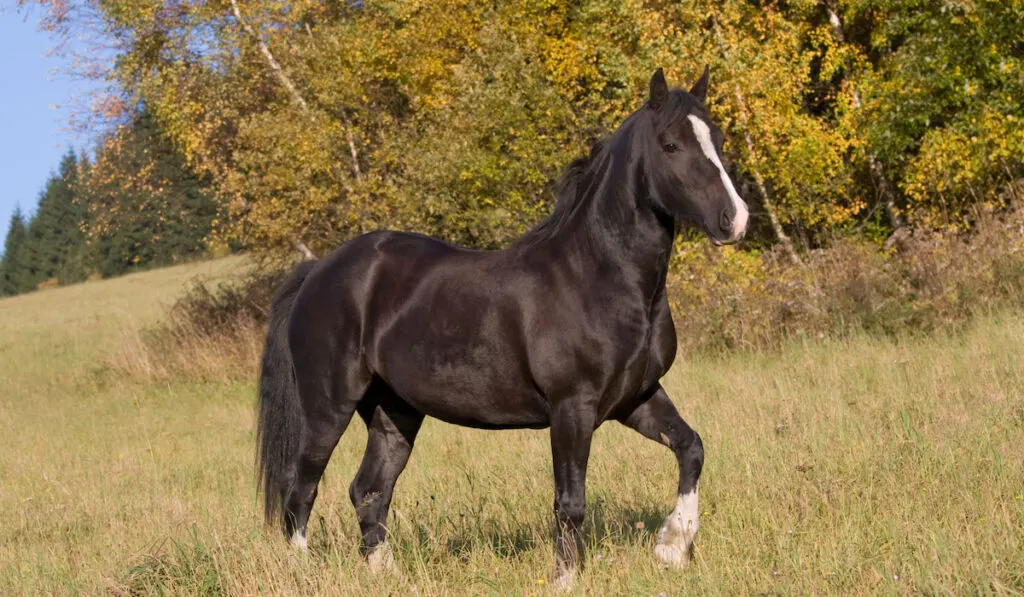
Welsh ponies or Welsh mountain ponies are native to mountainous regions in Wales. They have existed since the Roman Empire era and were used as working horses by farmers and miners.
They also descend from other breeds, including Hackney, Norfolk Roadster, and the Arabian.
You can recognize Welsh ponies by their refined heads, muscular necks, and clean coats that come in different colors, such as black, roan, bay, brown, white, and chestnut.
On average, they stand 12 to 13 hands high. There are four categories of Welsh ponies created based on their heights. These include Welsh ponies sections A, B, C, and D.
Ponies that belong in section A are the shortest, while the ones in section D are the tallest.
Overall, Welsh ponies are intelligent, strong, and obedient creatures.
5. Fell Pony
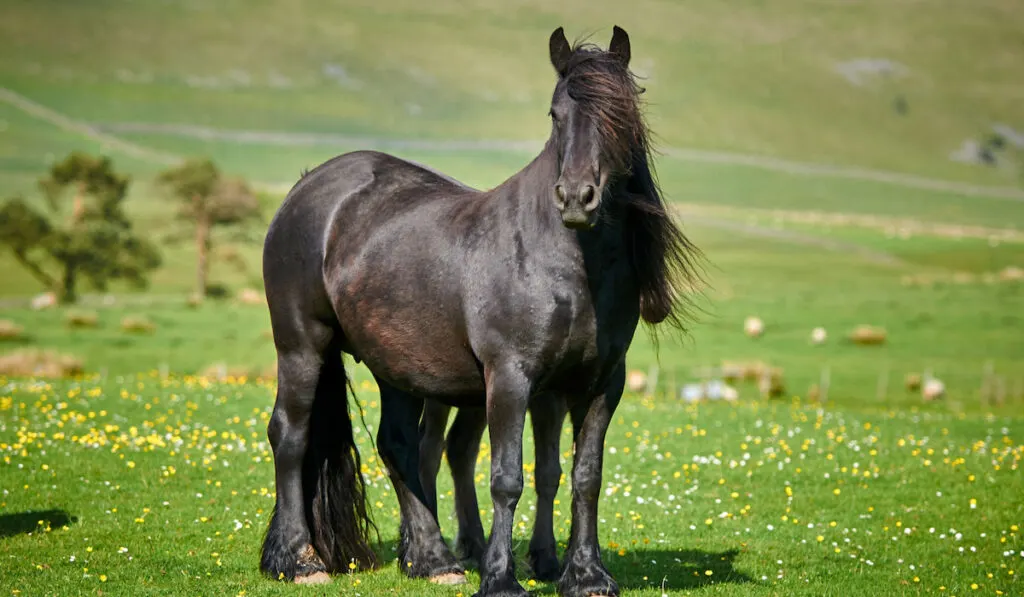
Fell ponies hailed from British fells in the northwest regions. They were created from a cross between Friesian, Celtic, and other obscure horses during the Roman era.
In the old days, these ponies worked in coal mines, railways, farms, canals, and villages. These days, they are raised for more leisurely purposes such as pleasure riding, driving, trail riding, dressage, and racing.
Most Fell ponies you find are black. But they also have brown, bay, and gray coats.
You can also spot these ponies by their athletic frames, muscular necks, long silky manes, and feathered legs. On average, Fell ponies stand 13 to 14 hands high.
6. Shetland Pony
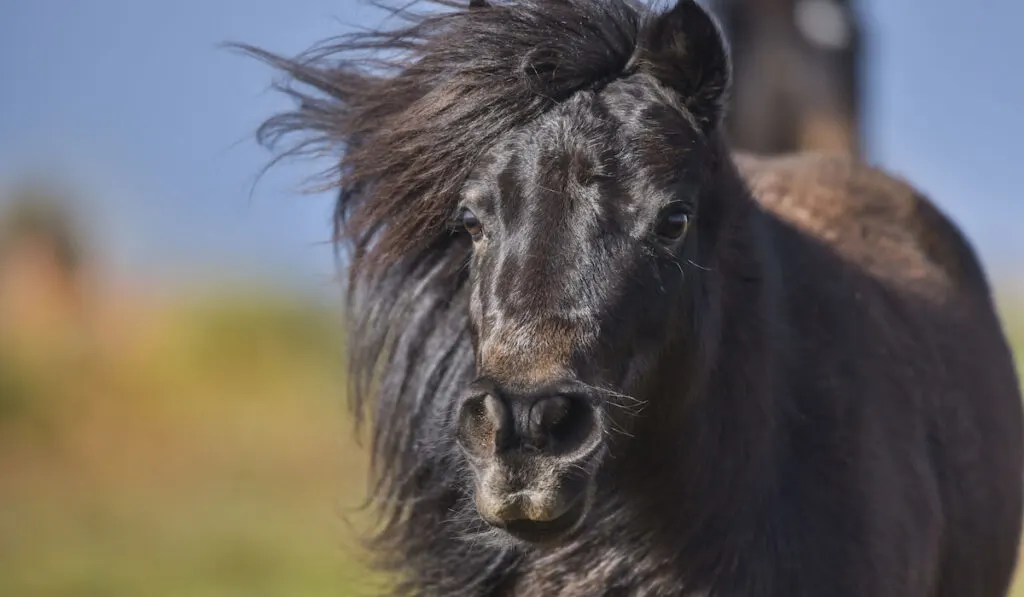
Shetland ponies originated from the Shetland Islands in Scotland.
For 4,000 years these horses have been used as the working ponies of choice by the Scottish in farming, mining, and other rough environments.
These ponies come in different colors such as black, brown, gray, bay, roan, chestnut, cream, dun, palomino, and buckskin. They also stand 7 to 11 hands high, shorter than most pony breeds.
Shetland ponies possess stocky bodies, short but muscular legs, long manes, and bushy tails. They also have thick coats that insulate their bodies during cold seasons.
These obedient ponies are intelligent, strong, and easy to handle. With their small frames, you can safely let children ride them for training or for fun.
Healthy Shetland ponies can live up to 30 years or more. Aside from their regular maintenance, this breed has no serious health concerns.
7. Asturcon Pony
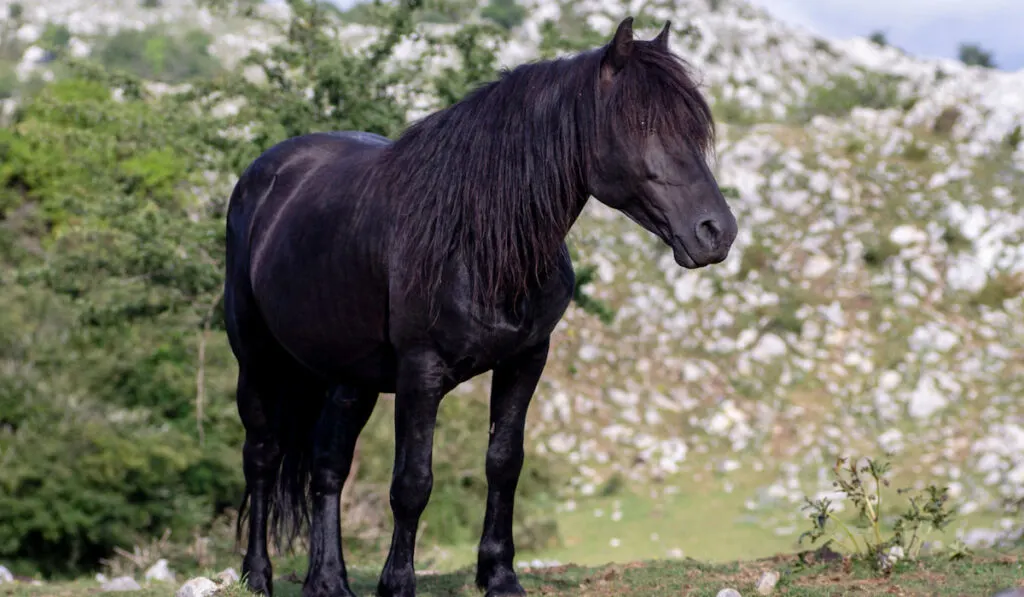
Asturcon ponies are commonly found in the northwest region of Spain, specifically in Asturias. They are also called Asturian ponies.
Asturcon ponies descend from Garrano, Sorraia, and Celtic ponies. You can recognize these ponies by their small heads, slim necks, stocky bodies, thick manes, and strong legs.
Their coats are primarily solid black in color. However, there are also a few brownish-black Asturcons spotted in their native areas.
Asturcons ponies stand 11 to 13 hands high and weigh 551 to 606 pounds.
They are loyal, easy-going, and adaptable to extreme terrains and harsh weather.
8. Connemara Pony
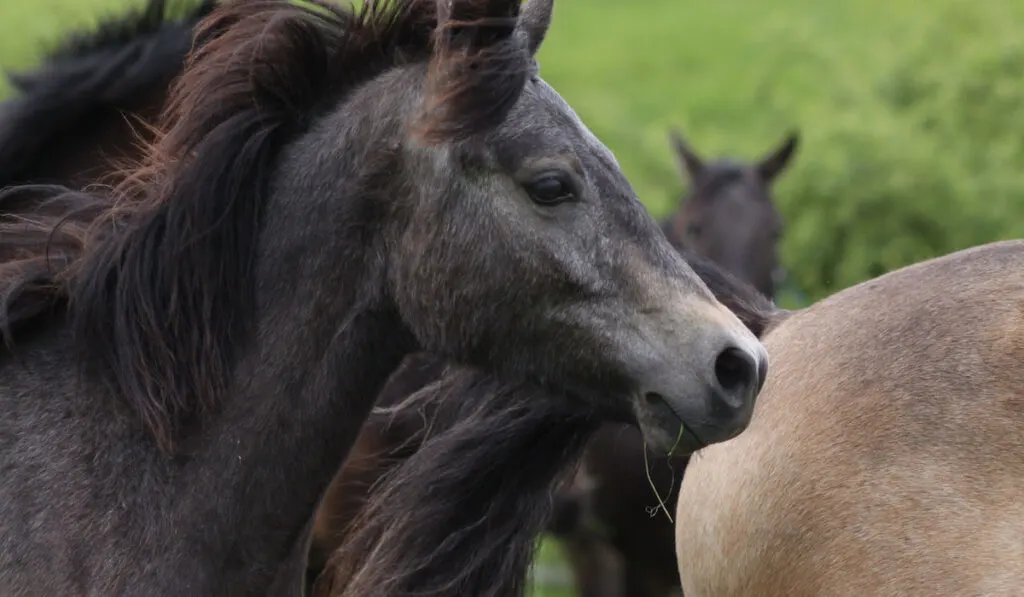
Connemara ponies originated from Western Ireland. They descend from Spanish horses that were bred with wild Irish horses in the 1500s.
Another theory stated that these ponies were created from a cross between Scandinavian and Irish Hobby horses.
Connemara ponies possess compact bodies, athletic frames, broad chests, well-defined heads, and muscular legs.
They also come in various colors, such as black, gray, brown, cream, dun, roan, chestnut, and palomino.
These ponies stand 12 to 15 hands high and weigh 639 to 860 pounds. On average, they can live between 30 and 40 years.
With their calm, intelligent, and warm personalities, Connemara ponies are easy to handle. They are also a hardy breed that can withstand harsh environments.
9. Pony of the Americas
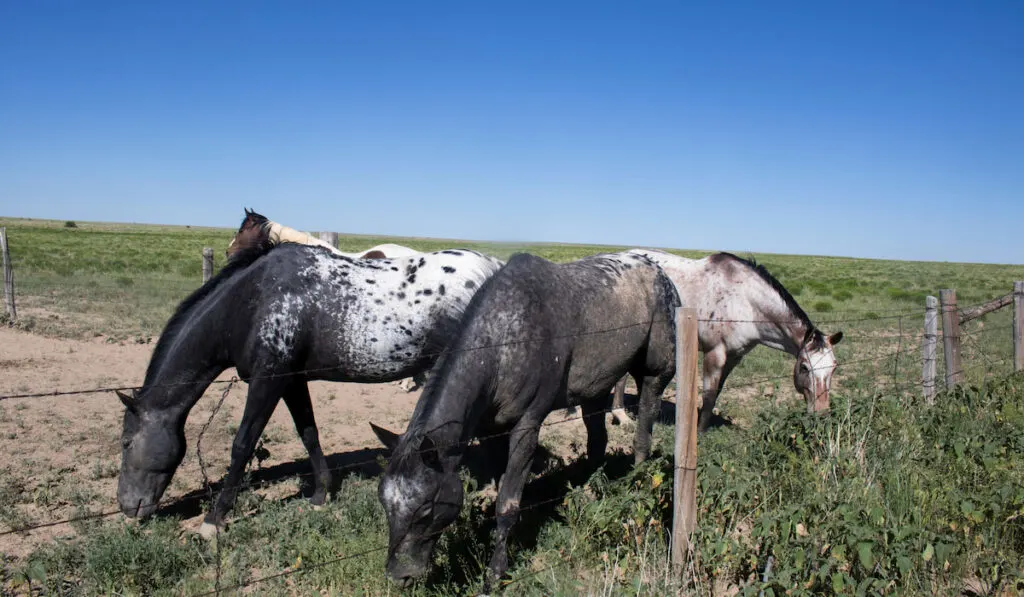
Ponies of the Americas are native to the United States. In the 1950s, they were developed in Iowa by a pony breeder named Leslie Boomhower.
Boomhower crossbred an Arabian/Appaloosa mare with a Shetland pony, giving birth to a colt named Black Hand. Then, she established her creation as a registered breed, leading to breeding by other pony owners.
Ponies of the Americas come in different colors, such as black, brown, gray, bay, and chestnut.
These ponies can also have solid color coats with multiple spots in different colors scattered on other parts of their bodies.
On average, Ponies of the Americas stand 11 to 14 hands high. Healthy ponies can live between 25 to 30 years.
These ponies are friendly and easy to handle. You can train them for pleasure riding, dressage, jumping competitions, driving, and trail riding.
10. Highland Pony
Highland ponies hail from the mountainous regions and moorlands in Scotland. In the old days, they were primarily used for heavy loads, farm work, and pony trekking.
Nowadays, these ponies excel in driving, pleasure and trail riding, and competition.
Aside from Scotland, small populations of Highland ponies are also found in Germany, France, and Australia.
You can spot Highland ponies by their well-defined heads, athletic bodies, silky manes, and long tails. Their coats come in shades of black, gray, brown, yellow, and cream.
These Scottish ponies stand 13 to 14 hands high and weigh 1,000 to 1,200 pounds. On average, healthy ponies can live between 25 and 30 years.
Being a hardy breed, Highland ponies have high stamina and can quickly adapt to harsh terrains. They are also intelligent, hardworking, and friendly to humans.
11. Chincoteague Pony
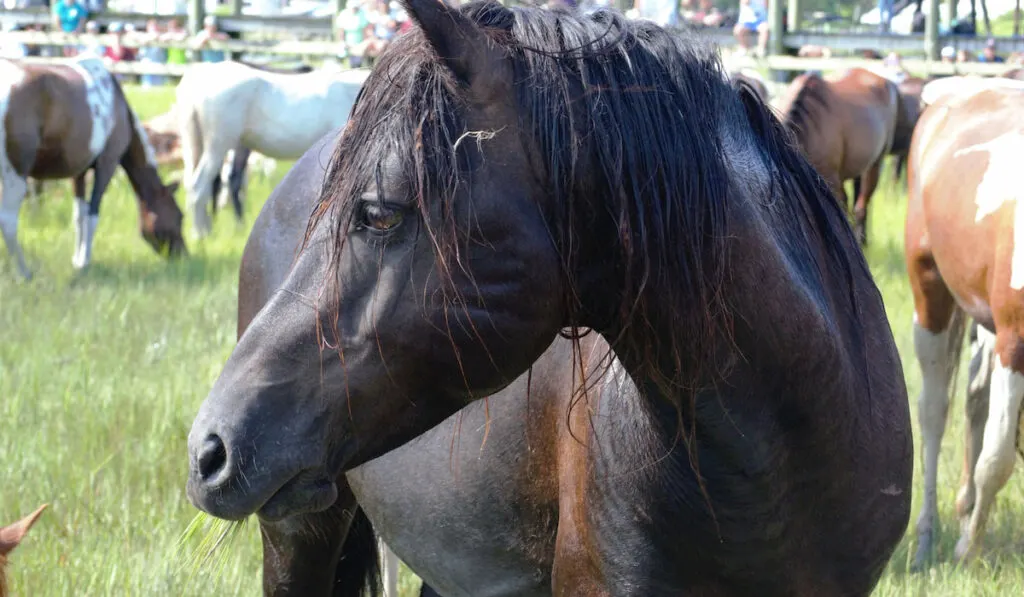
Chincoteague ponies are descendants of wild horses living near Assateague Island on the Virginia and Maryland coasts.
Horse breeders believe these ponies were also created from a cross between Spanish horses, Shetland, and Welsh ponies.
Chincoteague ponies possess small heads, thin but muscular legs, and sturdy frames. They come in different colors, such as black, gray, bay, brown, white, and sorrel.
These ponies stand 12 to 13 hands high and weigh 850 pounds on average. They are fit for pleasure riding, hunting, farm work, and carrying loads.
Chincoteague ponies are adaptable and hardworking creatures.
Currently, there are 1,000 Chincoteague ponies in Canada and the United States.
12. Gotland Pony
Gotland ponies are native to Sweden. They are also known as the Russ, Gotland-Russ, Skogruss, and Skogsbagge.
The Scandinavians believe these ponies descend from an extinct, ancient breed known as Tarpan.
Another theory states that Gotland ponies are exclusively native to Gotland Island without any relation to other species.
You can spot these ponies by their small heads, large eyes, thick and muscular necks, deep chests, and strong legs. They also stand 11 to 13 hands high.
Although Gotland ponies are physically small, they possess high stamina and the strength to carry loads as heavy as 159 pounds. As a result, they are perfect for show jumping, dressage, racing, and other competitions.
With their calm and intelligent personalities, children and beginners won’t have difficulty riding Gotland ponies.
13. Hackney Pony
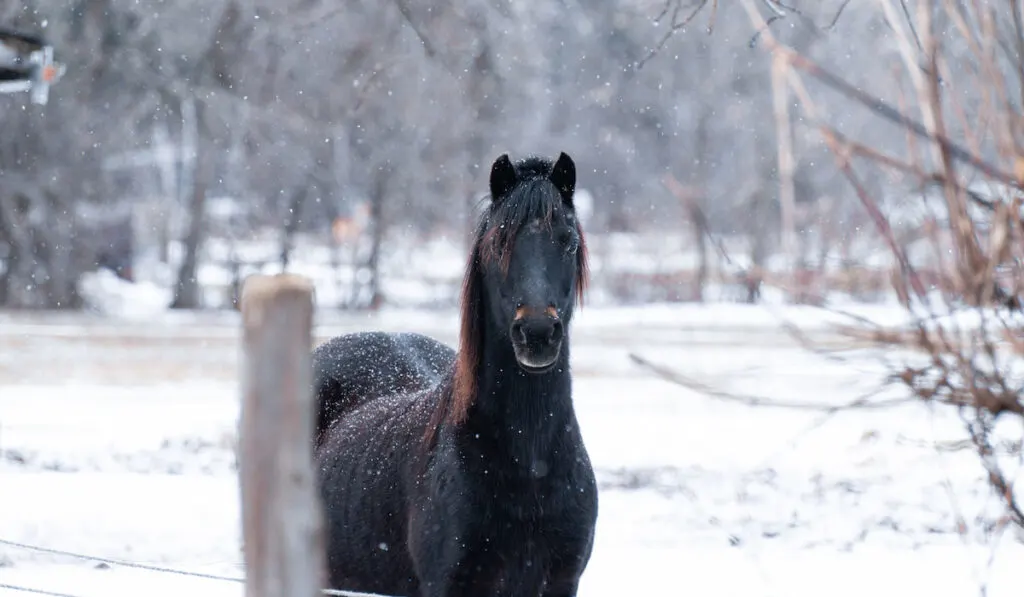
Hackney ponies originated in England. They were created in 1872 by a breeder named Christopher Wilson.
Wilson crossed Fell pony mares with Hackney stallions to create this breed. People also called these equines the “Wilson ponies” to honor his work.
Later, breeders refined this species by adding Welsh ponies and Shetlands into the gene pool.
Hackney ponies come in black, bay, and chestnut. They also have small heads, erect ears, athletic frames, sturdy backs, and strong legs.
On average, these ponies stand 12 to 14 hands high. Today, with their strength and energetic behavior, Hackney ponies are used to pull carriages and trained as show ponies.
14. Burmese Pony
Burmese ponies are less popular than other common breeds. However, Her Majesty Queen Elizabeth II used these ponies in ceremonies and as her daily fun ride.
In fact, a statue was built outside of the Saskatchewan Legislative Building in Regina, Canada, to commemorate the Queen and her royal ride.
Burmese ponies share the same bloodlines as Mongolian horses and other Eastern breeds. Burmese ponies hail from the Shan state in Eastern Burma. They are also called Shan ponies.
These ponies possess straight profile heads, muscular necks, deep chests, sturdy frames, and muscular legs. In addition, their coats come in different colors, such as black, brown, bay, and chestnut.
Burmese ponies stand 12 to 13 hands high. They are a high-endurance breed that can adapt to mountainous regions and other harsh terrains.
These ponies are primarily used for trekking, polo, eventing, racing, and pleasure riding.
15. Faroe Pony
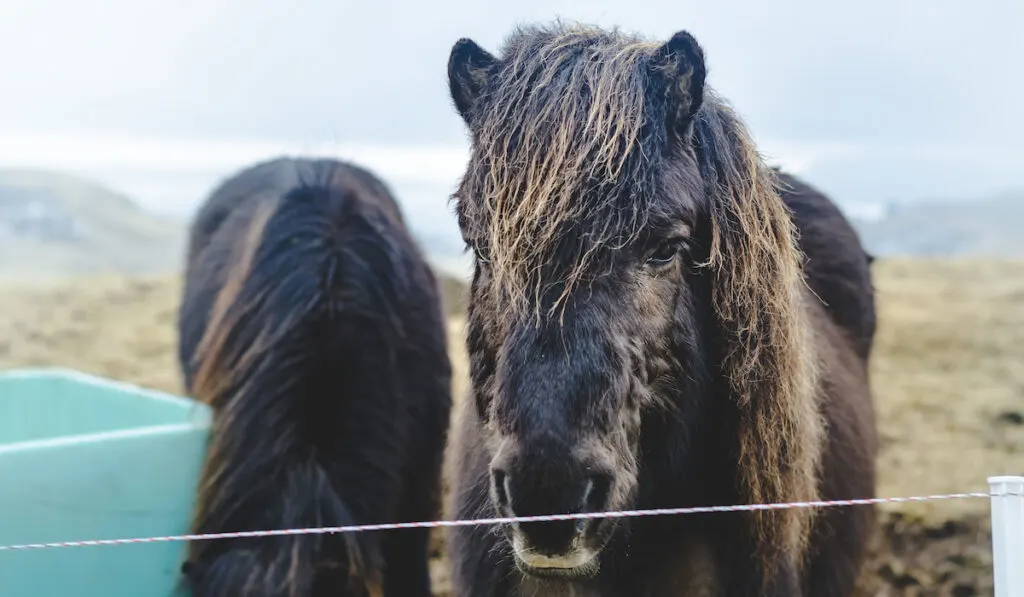
Faroe ponies are native to the Faroe Islands, located between the United Kingdom and Iceland.
Faroe ponies are considered purebred and don’t share bloodlines with other breeds.
In the 18th century, there were 800 Faroe ponies in their native land. However, exportation, death, and horse trades decreased their population to only five ponies.
In 1987, a breeding program was initiated to conserve and save this species from extinction. Today, 94 Faroe ponies are living in the Faroe Islands.
You can recognize these ponies by their large heads, stocky bodies, short legs, thick manes, and waterproof winter coats.
Their coats can come in black, brown, bay, dun, palomino, and black-and-white.
Faroe ponies stand 11 to 12 hands high and weigh 550 to 660 pounds. In the early days, they were used for heavy work in farms and villages.
Today, these ponies are exclusively kept and raised by enthusiasts. They are also best for children and beginners.
Final Thoughts
Although horses are more popular than ponies, these small equines fondly remain in people’s hearts. Besides, lumping ponies and horses in one group is like comparing apples and oranges.
In fact, there are things that ponies do better than horses. Since they are small, you can easily transport them from one place to another.
Most ponies are calm and easy to handle making them perfect for children and beginners.
Resources
- https://www.thesprucepets.com/dartmoor-pony-breed-profile-5324885
- https://en.wikipedia.org/wiki/Dartmoor_pony
- https://www.horseillustrated.com/horse-breeds-horse-breed-articles-the-dales-pony
- https://www.globetrotting.com.au/horse-breed-dales-pony/
- https://www.horsebreedspictures.com/australian-pony.asp
- https://www.globetrotting.com.au/horse-breed-australian-pony/
- https://www.ponymag.com/pony-hangout/other-stuff/british-breeds-welsh-pony/
- https://www.petguide.com/breeds/horse/welsh-pony/
- https://www.globetrotting.com.au/horse-breed-fell-pony/
- https://livestockconservancy.org/heritage-breeds/heritage-breeds-list/fell-pony/
- https://horserookie.com/shetland-ponies-facts-lifespan-care/
- https://www.thesprucepets.com/meet-the-shetland-pony-1885871
- https://en.wikipedia.org/wiki/Asturc%C3%B3n
- https://www.horsebreedspictures.com/asturcon.asp
- https://horsesonly.com/connemara-pony/
- https://www.horsebreedspictures.com/connemara-pony.asp
- https://pets.webmd.com/what-to-know-pony-of-the-americas
- https://www.horsebreedspictures.com/pony-of-the-americas.asp
- https://imh.org/exhibits/past/breeds-of-the-world/europe/highland-pony/
- https://pets.webmd.com/what-to-know-highland-pony
- https://www.horsebreedspictures.com/chincoteague-pony.asp
- https://breeds.okstate.edu/horses/chincoteague-pony.html
- https://www.horsebreedspictures.com/gotland-pony.asp
- https://www.globetrotting.com.au/horse-breed-gotland/
- https://www.globetrotting.com.au/horse-breed-hackney-pony/
- https://www.horsebreedspictures.com/hackney-pony.asp
- https://www.globetrotting.com.au/burmese-a-horse-fit-for-a-queen/
- https://www.horsebreedspictures.com/burmese-pony.asp
- https://www.globetrotting.com.au/burmese-a-horse-fit-for-a-queen/
- https://www.horsebreedspictures.com/burmese-pony.asp
- https://en.wikipedia.org/wiki/Faroe_pony
- https://www.horsebreedspictures.com/faroe-pony.asp

